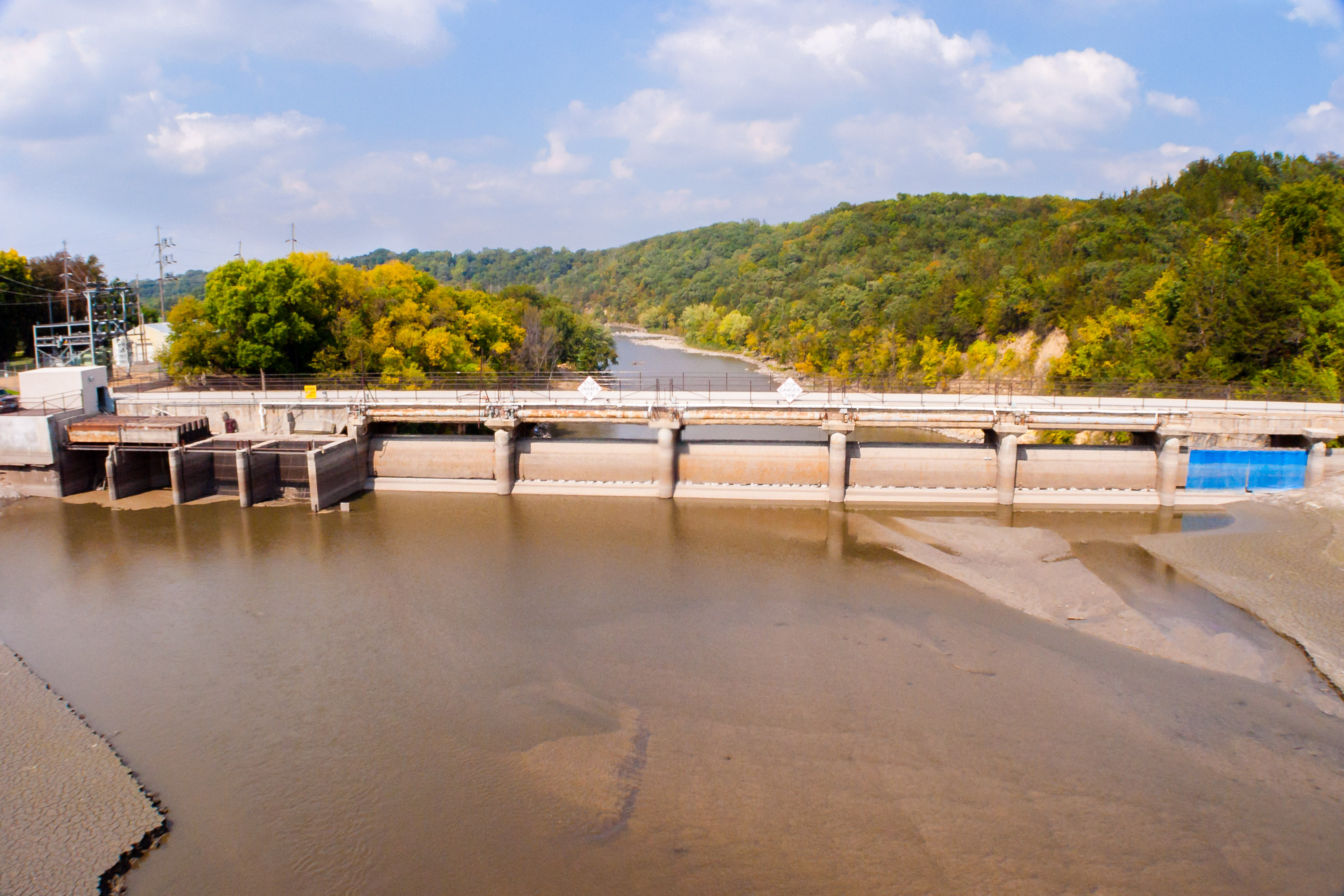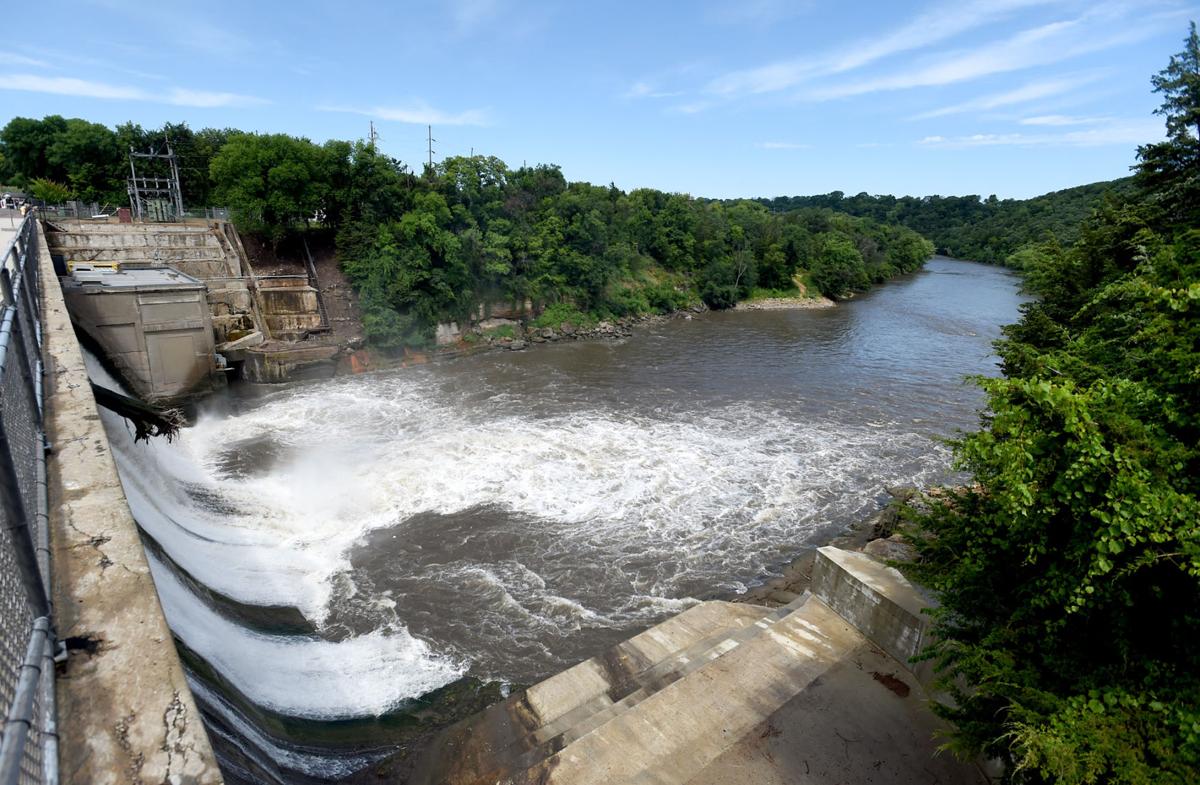Historical Context

Rapidan dam break – The Rapidan Dam, constructed in 1838, was a vital component of the burgeoning industrial landscape in Virginia. Its primary purpose was to provide a reliable source of hydropower for the operation of mills and factories downstream. The dam’s sturdy construction, employing a combination of stone and timber, stood as a testament to the engineering prowess of its time.
The catastrophic Rapidan Dam break sent a torrent of water crashing through the valley, leaving a trail of destruction in its wake. Its tragic consequences bear an eerie resemblance to the Mankato Dam failure in Minnesota, where a dam’s collapse unleashed a devastating flood.
Yet, amidst the turmoil, the Rapidan Dam’s legacy serves as a stark reminder of the indomitable spirit of those who survived and rebuilt, turning adversity into a testament to human resilience.
The Dam Break Incident
On August 18, 1926, a torrential downpour unleashed its fury upon the Rapidan region. The relentless rainfall, exceeding all expectations, swelled the Rapidan River to unprecedented levels. The dam, weakened by years of wear and the relentless onslaught of the raging waters, could no longer withstand the immense pressure. At 3:30 AM, the Rapidan Dam gave way, unleashing a catastrophic torrent of water that forever altered the course of history in the area.
The deafening roar of the Rapidan Dam break reverberated through the air, its unforgiving waters unleashing a torrent of destruction. As the raging current surged forward, it carved a path of devastation through Blue Earth County, leaving an indelible mark on its landscape.
Yet, amidst the chaos, the resilience of the human spirit shone through, as communities rallied together to face the aftermath of the Rapidan Dam break, determined to rebuild and heal.
The immediate impact of the dam break was nothing short of devastating. The surging waters tore through the surrounding countryside, carrying away homes, businesses, and infrastructure in their relentless path. Bridges were swept away like mere twigs, and roads were transformed into impassable quagmires. The once-tranquil Rapidan River had become an unforgiving force of nature, leaving behind a trail of destruction that would take years to repair.
Engineering Analysis

The Rapidan Dam, a concrete arch-gravity dam, was designed to withstand significant water pressure and resist overtopping. However, the dam’s structural design exhibited certain flaws and weaknesses that contributed to its eventual failure.
One critical flaw was the inadequate reinforcement of the dam’s foundation. The foundation rock was weak and fractured, and the dam’s weight exerted excessive pressure on it. This led to the development of cracks and fissures in the foundation, weakening the dam’s overall stability.
Engineering Decisions
During the dam’s construction, several engineering decisions were made that ultimately contributed to its failure. One such decision was the use of low-quality concrete in the dam’s construction. The concrete was porous and contained impurities, making it vulnerable to water seepage and erosion. Additionally, the concrete was not properly cured, which further compromised its strength and durability.
Another questionable decision was the lack of proper drainage systems within the dam. The absence of adequate drainage allowed water to accumulate and penetrate the dam’s structure, exacerbating the effects of seepage and erosion. The buildup of water pressure behind the dam further weakened its foundation and increased the risk of collapse.
Safety Measures
The Rapidan Dam’s safety measures were inadequate and failed to prevent its catastrophic failure. The dam lacked a comprehensive monitoring system to detect and address potential problems early on. Additionally, there was no emergency spillway to release excess water in the event of heavy rainfall or flooding. The absence of these essential safety features left the dam vulnerable to the forces that ultimately led to its collapse.
The failure of the Rapidan Dam highlights the importance of thorough engineering analysis, sound construction practices, and robust safety measures in dam design and construction. By addressing the flaws and weaknesses that contributed to the dam’s failure, future dams can be built with greater resilience and reliability.
Environmental Impact: Rapidan Dam Break
The Rapidan Dam break unleashed a devastating ecological catastrophe that profoundly altered the local ecosystem and surrounding areas. The torrent of water ravaged the riverbanks, uprooting vegetation and decimating wildlife habitats. The once-pristine river was transformed into a murky torrent, its water quality severely compromised by sediment, debris, and chemical pollutants released from the dam.
Water Quality
The dam break unleashed a surge of sediment, nutrients, and toxic chemicals into the river system. This influx severely degraded water quality, rendering it unsafe for drinking, irrigation, or recreational activities. The high levels of sediment blocked sunlight from reaching aquatic plants, disrupting photosynthesis and depleting oxygen levels in the water. The release of nutrients, such as nitrogen and phosphorus, led to algal blooms, further exacerbating water quality issues and creating dead zones where aquatic life could not survive.
Wildlife
The dam break had a devastating impact on wildlife. The sudden release of water inundated nesting sites, destroyed spawning grounds, and swept away countless fish, amphibians, and reptiles. The loss of riparian vegetation further reduced the availability of food and shelter for wildlife, leading to population declines and disruptions in the food chain. Many species that once thrived in the area were severely affected, including endangered species such as the Rapidan River redfin darter.
Vegetation
The dam break also had a significant impact on vegetation. The force of the water uprooted trees and washed away topsoil, exposing the underlying soil to erosion. The loss of vegetation destabilized riverbanks, making them more susceptible to future flooding. The altered flow regime of the river also affected the distribution of plant species, favoring invasive species that could tolerate the more dynamic conditions.
Long-Term Effects, Rapidan dam break
The ecological damage caused by the Rapidan Dam break will have long-term consequences for the local ecosystem and surrounding areas. The degraded water quality will continue to impact aquatic life, potentially leading to further species loss and disruption of the food chain. The loss of vegetation will make the riverbanks more vulnerable to erosion, increasing the risk of future flooding and sedimentation. The altered flow regime of the river will also have long-term effects on the distribution and abundance of plant and animal species.
Lessons Learned
The Rapidan Dam break serves as a stark reminder of the importance of dam safety and the potential consequences of dam failure. The lessons learned from this tragedy have led to significant changes in dam construction and maintenance practices. Dams are now designed with more stringent safety standards, including the use of reinforced concrete and multiple spillways to prevent overtopping. Regular inspections and maintenance are also essential to ensure the integrity of dams and minimize the risk of failure.
The cataclysmic Rapidan Dam break unleashed a torrent that ravaged the countryside, leaving an indelible scar. Its fury echoed the devastating Mankato Dam failure , a sobering reminder of the destructive power unleashed when human engineering falters. Yet, the Rapidan Dam break stood as a testament to resilience, as communities rebuilt and nature slowly reclaimed the ravaged land, weaving new threads into the tapestry of life.
The rapidan dam break, a catastrophic event that unleashed a torrent of water, sent shockwaves through the region. As the floodwaters surged through the surrounding area, they left behind a trail of destruction, forcing residents to flee their homes. The rapidan dam flooding, documented in detail at rapidan dam flooding , remains a sobering reminder of the power of nature and the importance of dam safety.
The deafening roar of the Rapidan Dam break reverberated through the valley, unleashing a torrent of water that surged relentlessly downstream. Amidst the chaos, one question lingered: where is Rapidan Dam ? Its location, nestled in the heart of Virginia, became a beacon of concern as the floodwaters surged towards populated areas.
The once-serene reservoir had transformed into a raging beast, threatening to wreak havoc upon the unsuspecting communities below.